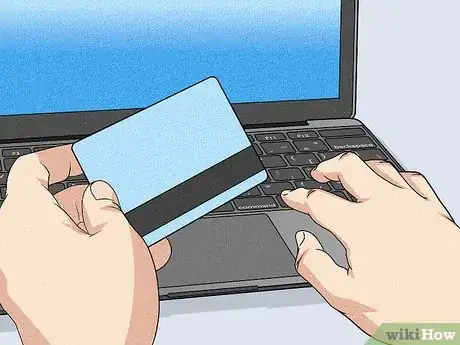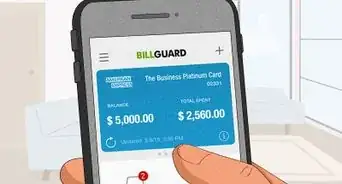This article was co-authored by wikiHow Staff. Our trained team of editors and researchers validate articles for accuracy and comprehensiveness. wikiHow's Content Management Team carefully monitors the work from our editorial staff to ensure that each article is backed by trusted research and meets our high quality standards.
This article has been viewed 65,844 times.
Learn more...
There are a number of reasons you may have a joint bank account with someone. For example, maybe you share an account with a significant other or business partner. Other times, groups of roommates or siblings decide to open a joint account for shared expenses. Whatever your case may be, if you end a relationship with some kind of partner or go your separate way from a group of people, you’ll want to change your joint bank account to a single one. Don't worry if you're not in a good place with an ex-significant other because you don't necessarily have to see them to change the account's status. Just make sure to pay off any debts and divide the remaining money fairly before you remove yourself or someone else from the account.
Steps
Getting the Account Ready to Change
-
1Pay back any debts on the account. Pay off any overdraft fees, credit loans, and home loans that you owe on the account. This is the only way you will be allowed to change the ownership status of the account.[1]
- Basically, the account has to be “in credit” before you can change it to a single account. This means that you don’t owe the bank any money through that account and that the balance is $0.00 or above.
-
2Cancel any automatic payments if you're closing the account. Make sure to cancel automatic payments like rent, phone plans, utility bills, and anything else you pay from the account. This will avoid any overdraft fees or other additional fees on the account that could cause the balance to drop into the negative zone.[2]
- Remember to set up alternative payments from another account or to pay your bills in-person, so you don’t accidentally skip any payments.
- This is only necessary if you won't be using the account to pay bills any longer.
- If you're separating from a partner and you both have cards for the account, make sure to talk to them and agree that neither of you will use the cards any longer. This applies to both business partners and relationship partners.
Advertisement -
3Split any money in the account fairly if you’re separating from a partner. Divide the money equally between both of you if it seems fair. Split the money based on how much each person has contributed if it's fairer to divide it that way.[3]
- For example, if you contributed 2/3 of the monthly deposits to the account, you might agree with your partner to only give them 1/3 of the money in the account.
- If you are splitting the money with a business partner, dividing the money equally might be the fairest way to do it. If you're splitting with a relationship partner, it might make more sense to divide the money by contribution.
- If you can’t agree with your ex-partner on how to divide the money after a split, you will, unfortunately, have to let the courts settle it for you before you can proceed.
-
4Divide money in the account by contribution if you share it with a group. Calculate how much money in the account was contributed by each person if you share the account with a group, such as siblings, friends, or roommates. Give each person their share of the money in the account before you change the account’s ownership status.[4]
- For example, if you share the account with 2 of your siblings and you each made an equal monthly contribution, you can just divide the money 3 ways.
Removing Someone from the Account
-
1Visit the nearest branch of your bank. Most banks require you to request the removal of someone from an account in-person. You don’t usually have to go with the other person or people on the account if you just want to remove yourself. Go with both parties if you want to remove the other person and keep the account in your name.[5]
- Keep in mind that specific procedures for changing the status of an account vary from bank to bank. You can find more specific information on your bank’s website or by calling the customer service line.
- Make sure to bring your photo ID with you when you go to the bank.
-
2Fill out a form to request the removal of someone from the account. Talk to a bank employee and let them know you want to take someone off your joint account. Complete and sign the form they give you.[6]
- You’ll just have to fill out basic info like the account number and the account holders’ names and addresses.
- Some banks have this form available to download online. You can try to find it on your bank’s website, then print it out and fill it out at home if it’s available.
- If you don't want to bring the other person with you, such as if you're on bad terms with your ex-significant other, you can just request to remove yourself from the account.
-
3Return the form to the bank to change the account ownership status. Double-check that you filled out all the required info on the form and have the required signatures. Give the form back to a bank employee and wait for them to close your account.[7]
- Occasionally, banks will let you mail or fax the request form in. If you’re short on time, you can ask an employee at the bank if this is an option.
Warnings
- Remember to cancel any automatic payments from the account to avoid overdrafting or accumulating fees after you split up the money and pay off debts to the account.⧼thumbs_response⧽
- Always agree on how to divide any money in the account before you change the ownership status of the account.⧼thumbs_response⧽
References
- ↑ https://www.asb.co.nz/bank-accounts/all-about-joint-accounts.html
- ↑ https://www.asb.co.nz/bank-accounts/all-about-joint-accounts.html
- ↑ https://www.hsbc.co.uk/help/life-events/separation/
- ↑ https://www.hsbc.co.uk/help/life-events/separation/
- ↑ https://www.santander.co.uk/personal/support/current-accounts/joint-accounts
- ↑ https://www.halifax.co.uk/bankaccounts/help-guidance/common-enquiries/general-bank-account-enquiries/#Jointaccounts
- ↑ https://www.halifax.co.uk/bankaccounts/help-guidance/common-enquiries/general-bank-account-enquiries/#Jointaccounts


































































